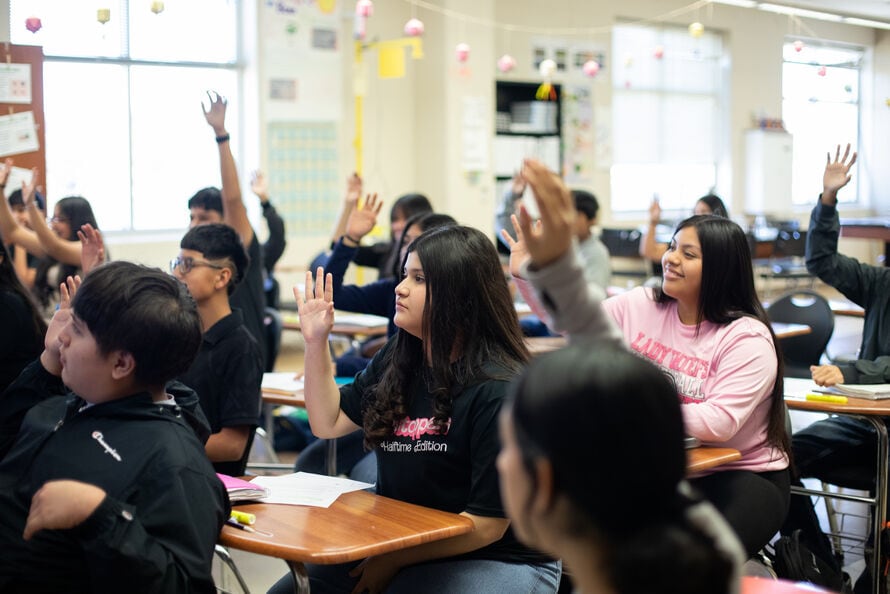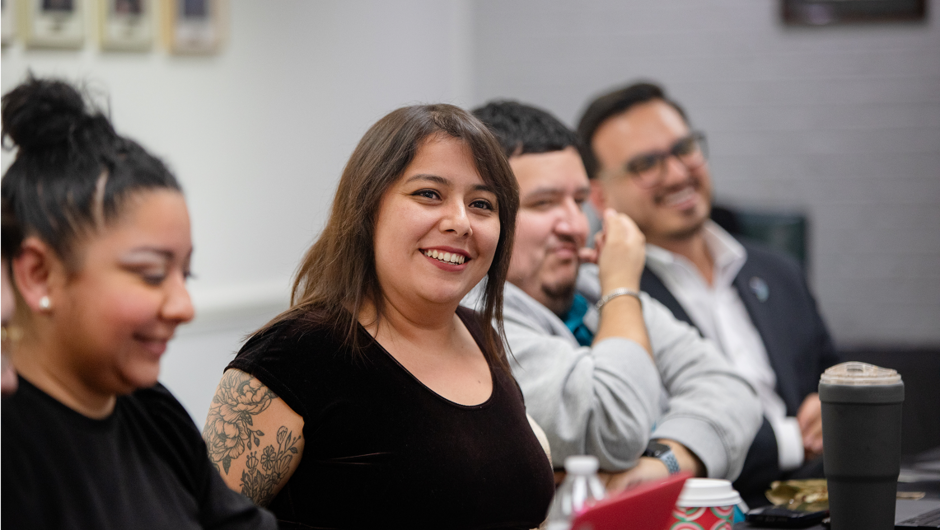Rio Grande Valley

About Us
Situated in deep South Texas, the Rio Grande Valley is 43,000 square miles bounded by the Rio Grande River to the west and south and the Gulf of Mexico to the east. The Valley's cultural richness has led to a community that is strong, proud, and determined—and a region that sings with opportunity and collaboration.
Teachers in the Rio Grande Valley are faced with a steep challenge. For every 100 students entering a public school classroom in South Texas today, only 12 will receive a college degree within six years of graduation. As early as third grade, students in South Texas are performing behind their peers across the state and this disparity persists into college for those students who are able to further their education.
Since 1991, Teach For America has brought more than 1,400 leaders to South Texas schools. Due to the partnership and sustained efforts of district teams, such as Pharr-San Juan-Alamo Independent School District and schools like IDEA, committed families, engaged community partners, and supportive elected officials, student outcomes have improved significantly during this time. The high school graduation rate has risen from 78 percent to over 90 percent since 2001, exceeding the rate for the rest of the state.
It is our goal that by 2030, twice as many children in the communities where we work will reach key educational milestones, indicating they are on a path to economic mobility and co-creating a future filled with possibility. This is an exciting time to live and lead in the Valley, where we are part of a movement working to change the region’s educational landscape and expectations for achievement.
Take the next step and make an impact.
Our Work
In the last 10 years, students in the Rio Grande Valley have achieved increases in educational outcomes.
From 73% to
91%
increase in graduation rates.
From 22% to
32%
in college readiness.
From 49% to
56%
in enrollment in higher education.
In the last 10 years, students in the Rio Grande Valley have achieved increases in educational outcomes.
From 73% to
91%
increase in graduation rates.
From 22% to
32%
in college readiness.
From 49% to
56%
in enrollment in higher education.
Driving this change has been bold leadership, school systems leaders from pre-K-12, institutions of higher education, and the workforce collaborating to create systems, public-private partnerships, and coordinated philanthropy. As a result, there has been a collective and consistent call for better educational outcomes for all children in preparation for the 21st-century demands our students face.

Over the course of 27 years, Teach For America Rio Grande Valley has been a trailblazer in building a formidable leadership pipeline and network that has been a strong driver in this progress at the system, school, and classroom leadership levels. Look across the Rio Grande Valley, and you will see the footprint our corps members and alumni continue to make in our community. In spite of this progress, we know there is so much more to be done to ensure today’s students are the leaders our community needs in the future.

“I feel like I am adopted into a culture that wasn't my own to start with but I have grown to feel a part of this amazing place.”
- Ivy Stejskal, RGV Corps Member 2015
Where We Work
Corps members teach in the state’s three southernmost counties in ten different districts and over 30 different schools. Because our region is so geographically vast, we strive to keep corps members in groups to ensure that they receive support and can partner together and with colleagues to increase student opportunities and achievement.
Hidalgo County is home to many neighboring towns and small cities and has a large concentration of stores, restaurants, and housing options. Corps members currently teach in the towns of La Joya, Penitas, Palmview, Mission, McAllen, Edinburg, Pharr, San Juan, Alamo, Donna, Weslaco, Mercedes, Edcouch, and Elsa. Many corps members who are not from the region are surprised at the high level of development and amenities in this part of the region.
District and School Partners
- Donna Independent School District
- Edcouch-Elsa Independent School District
- McAllen Independent School District
- Pharr-San Juan-Alamo Independent School District
- IDEA Public Schools
- Vanguard Academy
Starr County contains our rural placements in the towns of RIo Grande City and Roma. Most corps members rent very inexpensive houses close to their school and enjoy the ability to run, bike, and explore the less developed part of the region.
District and School Partners
- Rio Grande City-Grulla Independent School District
- Roma Independent School District
- IDEA Public Schools
Cameron County lies on the Gulf of Mexico and has a mix of small cities and towns. Corps members currently teach in the towns of Harlingen, San Benito, and Brownsville. A strong network of highways mean corps members are never too far away from friends or training located in other parts of the region. Many housing options exist in this county from new apartment complexes to shared houses for rent.
District and School Partners
- Harlingen Consolidated Independent School District
- Point Isabel Independent School District
- San Benito Consolidated Independent School District
- IDEA Public Schools
Get in Touch
Questions about Teach For America Rio Grande Valley?
“When my senior year of college came around, I knew I wanted to help others, but it wasn’t until I spoke to my Teach For America recruiter that I finally decided how I would do so. TFA’s mission deeply resonated with me and reminded me of my former teachers, some of whom were from TFA who, thanks to their constant encouragement, helped me get to and through college. I wanted to be able to push my students to reach their full potential in STEM the same way that my former TFA teachers did for me.”
- José Castillo, RGV Corps Member 2020
Expand Opportunities for RGV Students
Naturally situated on a physical border of the Rio Grande River, the Rio Grande Valley sits at the crossroads of two nations with intertwined history, culture, and language. For much of its history, the region has been defined by what it lacks. Increasingly confident, the local community is communicating its own narrative with a strong emphasis on family and community. Together, leaders from across sectors are stating that we can—and must—provide higher-quality educational options for all students.
Educators in the Rio Grande Valley have been slowly changing the odds. In a community where more than 85 percent of students are classified as economically disadvantaged, data shows the region's students are increasingly able to catch up to, and in many cases surpass the state average. In the past, the expectation might have been to graduate high school but now families and communities are demanding more opportunities for students to pursue higher education, including a new university and medical school.
Educators are highly respected leaders in the community and are given flexibility to innovate and develop additional solutions and pathways for students. Teach For America partners with a wide variety of school districts to develop our corps members and alumni into leaders who continue to fuel change as we work towards greater educational opportunities for all students.
Interested in joining the Rio Grande Valley teacher corps?



